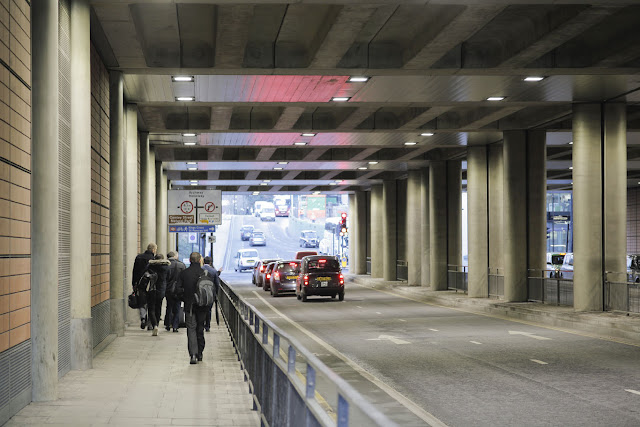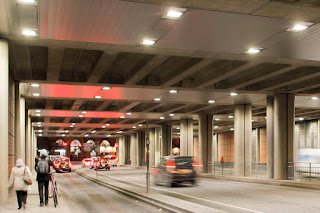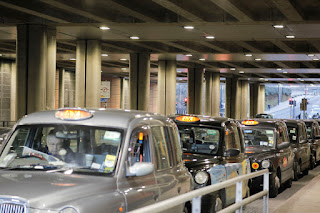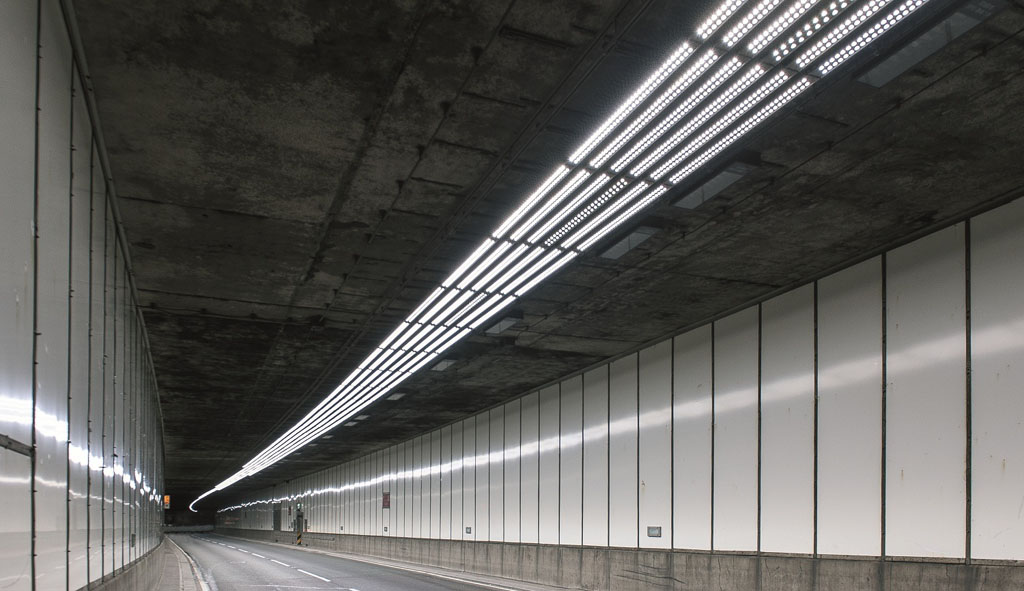
TAG | philips led
18
Firms race to be first to bring IoT to lighting market
Comments off · Posted by admin in LED
Philips and Cisco team up while Gooee unveils its latest generation of internet-connected products. Lux Today for 15 December 2015 presented by Courtney Ferguson.
internet connected lighting · internet of things · led lighting · lux · Novel Energy Lighting · philips led
11
Philips and Cisco form alliance to target global office lighting market
Comments off · Posted by admin in LED, LED downlights, LED panels, LED Spots, Philips LED
Philips and Cisco have formed a global strategic alliance that will combine Philips’ LED based connected lighting system with Cisco’s IT network to address a global office market estimated to be worth EUR 1 billion. The Alliance is designed to bring the benefits of the Internet of Things in offices to facilities managers, building owners and office workers.
The pair will combine Philips’ connected office lighting system using Power over Ethernet (PoE) technology with Cisco’s network technology. Light points in the Philips system, equipped with sensors and software applications, can be connected using Cisco technologies.
The lighting network creates a pathway for information and helps enable new services. The system can provide data to optimise user comfort and improve the office environment and office workers can personalise their lighting via their smartphones.
To showcase how Philips and Cisco can work together to unlock the benefits of the IoT in offices, Cisco is installing a state-of-the-art Philips connected lighting system at its Canadian headquarters in Toronto. Philips and Cisco will also collaborate on a joint go-to-market strategy.
Bill Bien, SVP, head of strategy and marketing, at Philips Lighting, said: “Our alliance has two of the world’s biggest and trusted lighting and connectivity brands working together to bring the Internet of Things to life in offices and commercial buildings across the world. Customers will receive the best energy efficient lighting experience in the connected world and be able to use information acquired from their connected lighting system to save energy, reduce costs, improve productivity and optimise their workspace environment. Lighting that is connected to highly secure, reliable IT infrastructure will form the backbone of the smart office of the future.”
Together Philips and Cisco aim to accelerate adoption of this technology in the market and deliver increased connectivity, comfort and efficiency.
Edwin Paalvast, SVP EMEAR, Cisco and executive sponsor of the Cisco – Philips Alliance, said: “The world is becoming digital, and by working with Philips, we can help building owners more quickly digitise their lighting networks to drive better user experiences and efficiency. By partnering with Philips, we are delivering a reliable PoE-powered LED lighting solution using a highly secure IT network.”
Typically, lighting is responsible for 40 percent of a building’s electricity use. The pair estimate that nearly 80% in energy savings and reduced building maintenance costs can be realized by managing, integrating and controlling a Philips LED connected lighting system through a network with Cisco.
To make offices more comfortable, office workers can personalize and adjust LED lighting to their preferences and tasks. For mobile access, office workers can use a smartphone app to access other building services through a communications network.
“The possibilities of this connected lighting system are endless,” said Richard Lees, senior project manager at CBRE, a commercial real estate and investment services firm. “There are so many capabilities of this system that we haven’t even explored yet.”
Visit www.novelenergylighting.com to explore what Philips LED lighting can do for your next project.
cisco · LED downlights · led lighting · led panels · led tubes · Novel Energy Lighting · office lighting · philips led · philips lighting
6
Philips chief in passionate plea: ‘What are we waiting for?’
Comments off · Posted by admin in LED, Philips LED
Published on 29 Sep 2015
Philips Lighting chief Eric Rondolat has called on international business leaders to act on climate change by embracing new lighting technologies. PLUS: Internet of Things is theme of this year’s LuxLive show in London. Lux Today 29 September 2015 presented by Courtney Ferguson.
energy efficient lighting · led GU10 · LED lamps · led lighting · LED retrofit · led tubes · Novel Energy Lighting · philips led · philips lighting
19
LEDs cut costs in North London underpass
Comments off · Posted by admin in LED, LED downlights, LED Floodlights, Philips LED

This underpass near King’s Cross and St Pancras stations in North London is saving money on energy and maintenance since it had its old metal halide lights replaced with specially designed LED road tunnel luminaires from Philips.
The St Pancras Road underpass is a busy road, cycle and pedestrian route to the two major train stations, as well as providing access to Camden Council’s new offices. It was previously lit by around 100 twin-lamp metal halide fittings and the council saw an opportunity to visually improve what had become a gloomy and uninviting area. This was a ‘spend to save’ initiative to take advantage of energy-efficiency gains and lower maintenance costs while also reducing carbon emissions.
The lighting design was carried out by Philips and the new luminaires were installed by main contractor SPIE. SPIE’s John Broster said: ‘The previous luminaires were fitted into the soffit of the underpass and as this is a concrete strutted roof it would have been impractical to alter it. We needed a solution that could provide a direct replacement for the existing fittings.’
The stainless steel luminaires have been installed on a one-for-one replacement basis, to provide energy savings of more than 50 per cent. The new lighting has increased light levels and uniformity to remove the gloom, while the 4000K neutral white colour temperature has created a better and more inviting visual environment for users of the underpass. The tunnel feels safer and more pleasant.
The project also provided an ideal opportunity to make better use of lighting control. ‘As this is a short underpass the lighting only requires one-step dimming and we were able to adjust the existing system, using high light levels during the day and dimming at night to minimise the contrast for drivers entering the underpass,’ said Broster.
The council has achieved a significant reduction in energy consumption, while also reducing maintenance costs as the luminaires are expected to be virtually maintenance-free throughout their lifetime, and should pay for themselves in about five years.
Contact Novel Energy Lighting to discuss your LED lighting retrofit requirements. We work hand in hand with the major lighting manufacturers like Philips to specify, supply, and install projects. Tel: 0208-540-8287. Email: sales@novelenergylighting.com
led floods · LED lamps · led lighting · LED luminaires · led tunnel lighting · lux · Novel Energy Lighting · philips led · street lighting · tunnel lighting · urban lighting
12
Light at the end of the tunnel (and slightly dimmer light in the middle)
Comments off · Posted by admin in LED, Philips LED
Until recently, this tunnel in Stoke-on-Trent, England, had to be regularly closed to change failed lamps, causing disruption to drivers.
I have reduced my overall maintenance costs, saved a substantial amount of money in energy costs, reduced the carbon footprint and reduced the risks for the operatives’Paul Diamond, Amey
amey · energy efficiency · energy saving lighting · highway lighting · led lighting · Novel Energy Lighting · philips led · philips linear led · street lighting · tunnel lighting
9
Philips New MasterLED 6ft Tube Now Available!
Comments off · Posted by admin in LED, LED Tubes, Philips LED
The Philips MASTER LEDtube has now been extended with a complete portfolio including the new 6ft addition to the range.

led tube · masterled tube · masterled value · Novel Energy Lighting · philips led · philips led tube · philips lighting
Gordon Routledge, lighting expert and publisher of Lux, investigates a widely held belief about insects’ lighting preferences.
Ultraviolet light has been exploited for years to lure flies to an early death by electrocution – as can be seen in the bug traps at any supermarket’s fresh meat counter. Over the years I have heard from numerous sources that, because LEDs don’t emit ultraviolet light, they don’t attract insects.
“Given a choice between no light and a white light, do insects give up and go home, or do they fly merrily around your head, laughing at your feeble LED fittings and making the occasional landing on your neck to suck your blood?”
At first glance the statement seems to pass the common sense test. I didn’t start to really question it until I left a retrofit LED bulb switched on to test in the garage for six months, during which time the diffuser accumulated a significant number of corn flies. If there’s no UV, what is it about LEDs that’s so irresistible to insects?
The search for truth
Spend a little time trawling the internet and you will quickly unearth a wealth of articles, reports and anecdotes on UV light, insects and LEDs, frequently contradicting each other and sometimes with a strong smell of snake oil about them.
A few calls to the Royal Entomological Society put me on a clearer track, and I was directed to some useful papers on insects and light. Perhaps the most pertinent was undertaken in 2005 at the University of Agriculture in Faisalabad, Pakistan, titled ‘Insect orientation to various colour lights in the agricultural biomes of Faisalabad’.
The research was carried out by erecting a number of illuminated one metre-square screens in two separate locations, each six metres apart, and collecting the insects that became trapped on each panel at half-hourly intervals.
The study found that 60-70 per cent of insects preferred light at the blue end of the spectrum. But that doesn’t mean the others stayed at home – insects, as it turns out, have a wide variety of preferences. Eighteen per cent headed for a white light, another eight to 10 per cent went for yellow and two per cent headed straight for the red light district.
This is all very interesting, but what if you’re the only light in town? Little research has been carried out in the area of general lighting, and more specifically LED. Given a choice between no light and a white light, do insects give up and go home, or do they fly merrily around your head, laughing at your feeble LED fittings and making the occasional landing on your neck to suck your blood?
Bugged out
After the success of the North Yorkshire garage LED trial, I took the opportunity to extend the study to my brand new LED-lit kitchen. Leaving the doors open last week, I can report that the local midges are more than happy to hang around on a wall under an LED downlight, where they are soon joined by a selection of moths and flies.
“It appears that insects, like humans, have quite complex and diverse tastes in lighting, and may well spend hours debating the colour rendering of a dung heap under different sources”
And with lower levels of radiated heat than traditional light sources, they are far less likely to get burned in the process. It’s only a matter of time before word gets around in the insect community about this cool new hangout.
It appears that insects, like humans, have quite complex and diverse tastes in lighting, and may well spend hours debating the colour rendering of a dung heap under different sources.
But, also like humans, they’ll make do with what light there is. I’m sure the option of hanging around in a dimly-lit Starbucks and divebombing freshly-made cappuccinos is preferable to the risk of being spattered across a truck windscreen on the M25 while trying to find a nice, white HID lamp.
So next time Snake Oil Bob drops in to hawk his wares on the basis of their anti-bug properties, send him packing with an LED torch to Faisalabad, and he can explain to the local insects himself that it doesn’t emit any UV – if they’ll stop biting him for long enough to listen.
Visit Novel Energy Lighting today to light up your house
LED · led bulbs · LED lamps · led lighting · novel energylighting · philips led · thorn led
15
Philips MASTER LEDtube portfolio – The right LEDtube every time
Comments off · Posted by admin in LED, LED Tubes, Philips LED
|
led lighting · led tubes · masterled tube · Novel Energy Lighting · philips led · philips led tube · philips masterled
Europe has already phased out some types of halogen lamps to reduce the amount of energy used for lighting, and is moving towards banning more. LED manufacturers like Megaman have supported this policy, but the wider lighting industry lobbied successfully for the halogen phase-out to be delayed, arguing that consumers weren’t yet ready to make the switch.
Visit Novel Energy Lighting to order your Megaman LED lamps, or explore our range of other top names brands. LED lighting is now cheaper than you think!
energy efficient lighting · led GU10 · LED lamps · led lighting · Megaman LED · Megaman LED GU10 · Novel Energy Lighting · philips led
led lighting · light behaviour · lighting psychology · Novel Energy Lighting · philips led














